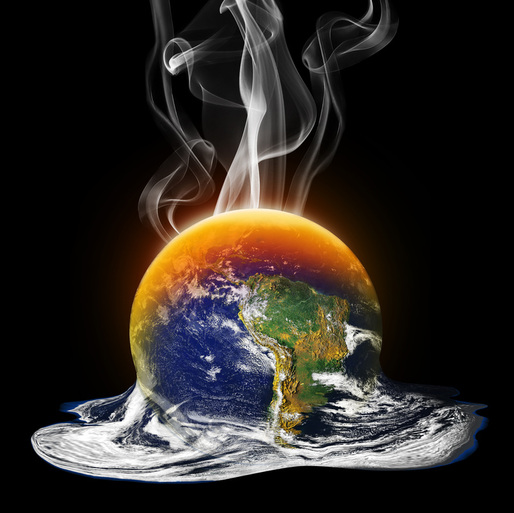Asia, the largest continent on Earth, is an overarching tapestry of climatic diversity, threading together a spectrum of environmental conditions that range from the sweltering deserts of the Middle East to the arctic chill of Siberia. To merely label Asia’s climate as “varied” would be an understatement; it is a veritable kaleidoscope of contrasts, intricacies, and extremes, much like a masterful painting that captures every nuance of the natural world. Within this vast expanse, microclimates unfold, painting landscapes that speak to a profound and delicate balance between humanity and nature.
The geographical scope of Asia encompasses myriad climatic zones. From the tropical warmth enveloping Southeast Asia to the frigid climes of northern territories, the continent illustrates the fierce variability in atmospheric conditions. The equatorial belt, known for its unparalleled humidity and vivacity, hosts rainforests teeming with biodiversity. Here, life thrives amidst lush, emerald canopies where sunlight scarcely penetrates. In stark juxtaposition, the arid expanses of the Central Asian steppes showcase an unforgiving landscape that eclipses life under the oppressive weight of relentless sun and scant rainfall.
Taking a closer look, one cannot overlook the monsoon, a critical climatic phenomenon that dominates much of South Asia. There exists a rhythmic dance between land and sea as warm air currents rise, gathering moisture from vast oceans. When these currents descend upon the subcontinent, they unleash the nourishing rains that sustain both agriculture and livelihoods. The monsoon season can, however, embody a duality; it bestows life to parched earth, yet can wreak havoc through torrential downpours, resulting in devastating floods. Thus, the monsoon epitomizes the dichotomy of Asia’s climate—a source of sustenance that doubles as a harbinger of doom.
Moving northward, one encounters the frigid tundras and vast taigas of Siberia, where climate brings forth a starkly different narrative. The Siberian winter is an unforgiving realm of ice, characterized by perpetual frost that holds dominion over the land for nearly half the year. In this desolate expanse, temperatures plummet well below zero, and nature retreats into dormancy. Yet, amid such harshness, life persists in peculiar forms, adapting through resilience and tenacity. As exemplified by the ingenious Siberian tiger, creatures here thrive amid the extremes, having evolved to navigate and endure one of Earth’s most formidable climates.
Meanwhile, the Himalayan massif, the towering titan of mountains, showcases how altitude plays a significant role in climatic variation. It creates an orographic effect, where warm, moist air ascends, cools, and precipitates in the form of snow. The result is not merely a chain of peaks, but an ecosystem that sustains glacial rivers, vital to millions of people downstream. The climate here is both austere and nurturing—shaping lives intertwined with the rhythms of nature. At the heights of the Himalayas, life exists at the cusp of fragility; it is a testament to the indomitable spirit of existence against a backdrop of formidable climatic extremes.
In stark contrast, the monsoonal forests offer a vibrant tableau that pulsates with life. The seasonal fluctuations allow for an explosion of flora and fauna, making these ecosystems some of the richest on the planet. They are dynamic environments where every rainfall infuses the earth with life, leading to an ever-present cycle of growth and decay. In this verdant paradise, the tropics reveal yet another facet of Asia’s climatic narrative, showcasing the continent’s ability to regenerate and rejuvenate.
Conversely, Asia’s harsh deserts present a more parched reality, where life ekes out an existence against formidable odds. The Gobi Desert, with its relentless winds and extreme temperatures, offers a stark representation of survival, with adaptations that allow wildlife to thrive in a realm where water is a precious commodity. Here, the contrast between the arid land and pockets of life symbolizes the stark dualism that unfolds across the continent, where scarcity often breeds resilience.
Moreover, urban areas like Tokyo and Beijing accentuate another dimension of Asia’s climate—urban heat islands. These bustling metropolises, awash with human endeavor and industrial activity, have witnessed a marked increase in temperatures due to rapid urbanization. The concrete jungle encapsulates an entirely different climatic narrative, where natural processes are often overshadowed by human impact. This phenomenon raises pressing concerns over pollution and its effects on climate, beckoning for an urgent call to action in facing the reality of ecological footprints.
As the specter of climate change looms larger, Asia finds itself at a pivotal juncture. The forecasts predict heightened temperatures, altered precipitation patterns, and intensifying natural disasters. The delicate balance of its ecosystems is at risk as rising seas threaten coastal communities from Bangladesh to Indonesia. Vulnerable populations face existential threats, urging a collective response that blends adaptation and resilience with the urgency of climate action. The climatic peculiarities of Asia underscore a profound call for sustainable practices, emphasizing the interconnectedness of nature and humanity.
In conclusion, Asia’s climate is a narrative of contrasts and extremes, an intricate tapestry woven from diverse ecological threads. From the moist heat of the tropics to the frigid embrace of the Arctic, the continent showcases a stunning array of climatic phenomena. Each region tells a story of survival, adaptation, and the delicate symbiosis that exists between humanity and the natural world. As this chapter unfolds, the imperative for a sustainable future beckons, calling for a concerted global effort to mitigate the impending challenges posed by climate change. In this endeavor, the unique appeal of Asia’s climate serves as both a vibrant reminder of nature’s beauty and a clarion call for responsibility.







